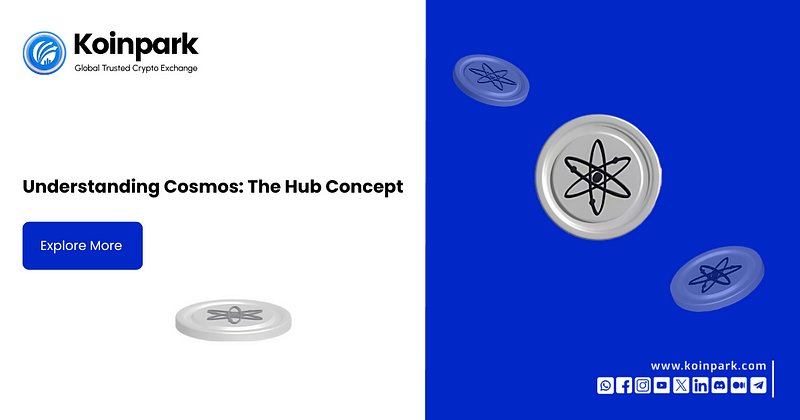Cosmos' Role in the Evolution of Blockchain Technology
 Christel Brandford
Christel BrandfordIntroduction to “Hub” When we think of a hub, it’s often seen as the central point of activity, where everything comes together.
Originating from mechanics, a hub is where all the spokes meet in a wheel, crucial for a bike’s functionality.
This idea of coordination and centralization is fundamental, much like in the project we’ll explore today — Cosmos.
“This article also includes helpful extra information on peer-to-peer (P2P) transactions for you.”
What is Cosmos?
Defining Cosmos Cosmos is an open-source blockchain project with a clear goal: to interconnect various blockchains.
This connectivity aims to create a hub that is fast, scalable, low-fee, and interoperable, providing a seamless experience for blockchain users across the globe.
Importance of Interoperability
Why Interoperability Matters Interoperability, the ability for different systems to communicate and work together seamlessly, is key to Cosmos’ vision.
Just as the internet revolutionized computer applications, enabling widespread adoption, Cosmos envisions a similar transformation for blockchains — an “Internet of Blockchains” accessible to users globally.
The Hub and Zones Model
Creating a Central Hub Cosmos introduces a “Hub and Zones” model. In this model, the Hub acts as a central facilitator for token transfers across various chains.
This addresses a common challenge in blockchain ecosystems — efficiently moving assets across different platforms, including conversions like BTC to INR.
Overcoming Transfer Challenges
The Problem of Inter-Chain Transfers One significant challenge Cosmos addresses is the complexity of transferring assets between different blockchains.
Traditional methods like atomic swaps have limitations. Cosmos’ Hub simplifies this process, allowing seamless transfers through the Inter-Blockchain Communication (IBC) protocol, benefiting users looking to buy BTC or explore Token Listings.
The IBC Protocol
Seamless Token Transfers The IBC protocol enables smooth token transfers between different zones connected to the Cosmos Hub.
This is achieved through a concept called two-way pegging, reminiscent of Bitcoin’s side chains, enhancing interoperability without compromising security. It facilitates transactions like USDT to INR conversions on a global scale.
Comparing with Polkadot
Different Approaches to Interoperability While Cosmos focuses on independence and connectivity, Polkadot emphasizes security and a structured governance model.
Cosmos offers a software development kit for customizable chains, empowering developers and facilitating global exchanges.
Polkadot’s layer 0 framework integrates security features into its network, ensuring a robust ecosystem for Token Listing and trading.
Tokenomics and Conclusion
Understanding Cosmos’ Token Economy Cosmos operates on an inflationary tokenomics model, encouraging staking for network participation.
Despite challenges like stake centralization, Cosmos represents a forward-thinking approach to blockchain interoperability, contributing to a more cohesive crypto ecosystem.
For users in India and worldwide, understanding how to buy Bitcoin in India and access Token Listings is crucial, highlighting the significance of a global cryptocurrency exchange.
Your bonus information is here: “I’ve recently used Koinpark, a P2P trading platform, for peer-to-peer transactions. It allows you to buy and sell USDT without any fees.”
“The platform is secure because it verifies everyone’s identity thoroughly and keeps detailed records, ensuring that their P2P trading is safe. I’ve had a good experience with it myself.”
Subscribe to my newsletter
Read articles from Christel Brandford directly inside your inbox. Subscribe to the newsletter, and don't miss out.
Written by

